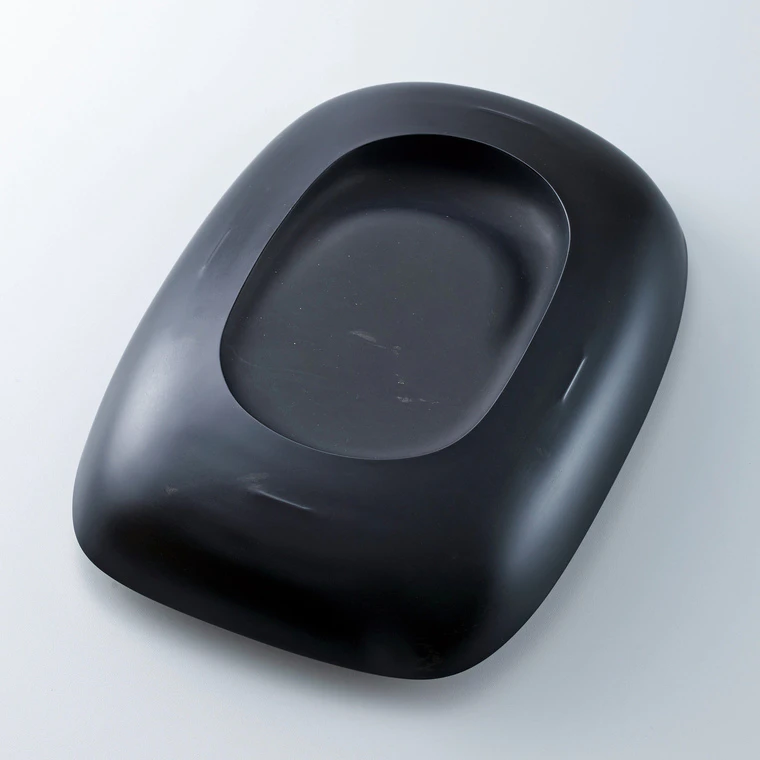KYOKU RYOUKEN "Small Hermit"
H 5.6 x W 19.0 x D 27.0 cm,Year.2019The prices of the artworks on Gallery Japan are determined by the artists themselves and are published directly on the website.
- according to today's currency rate
- shipping fees not included
- Inkstone carving
-
Price Range
$5,500 or more
Info
The prices of the artworks on Gallery Japan are determined by the artists themselves and are published directly on the website.
close - Awards at Japan Kōgei Assoc. Exhibitions : 8
About the Artwork
The stone used to make this ink stone is a sedimentary rock that exfoliates easily. A stone of this thickness is quite rare. I designed this ink stone considering and combining the Houraiji Mountain where this stone was produced and the shape of the medicine for long life that the hermits who established the Horaiji Temple had. There is a story and a sense of humour behind this design. The lines on the four sides creates a tense atmosphere, and although this stone can be held in one's hands, we can imagine an intelligent and magnificent view from this small piece.
Description
-
CategoryInkstone carving
-
MaterialsHomei Stone (Aichi Prefecture, Horaiji Mountain)
-
DimensionsH 5.6 x W 19.0 x D 27.0 cm
-
Year presented2019
-
RarityUnique
Techniques Used
Inkstone carving
Inkstones are used in brush calligraphy to grind the ink for writing characters. Inkstones are highly valued writing tools, and the process of ink grinding is regarded as a calming practice preceding calligraphic activities. First, the rough shape of the inkstone is cut out of the base rock. Next, a long-handled chisel is used to cut a flat surface where the ink will be ground and a well where the ink will gather. The final form is coated with a finish of wax or lacquer. Popular varieties of stone include Amehata slate (amehataishi) from Yamanashi prefecture, akamaishi schalstein from Yamaguchi prefecture, and hōmeiseki shale and slate from Aichi prefecture.
Selected exhibitions
- The 66th Japan Traditional Kōgei Exhibition (2019)
- Selected

The prices of the artworks on Gallery Japan are determined by the artists themselves and are published directly on the website.
